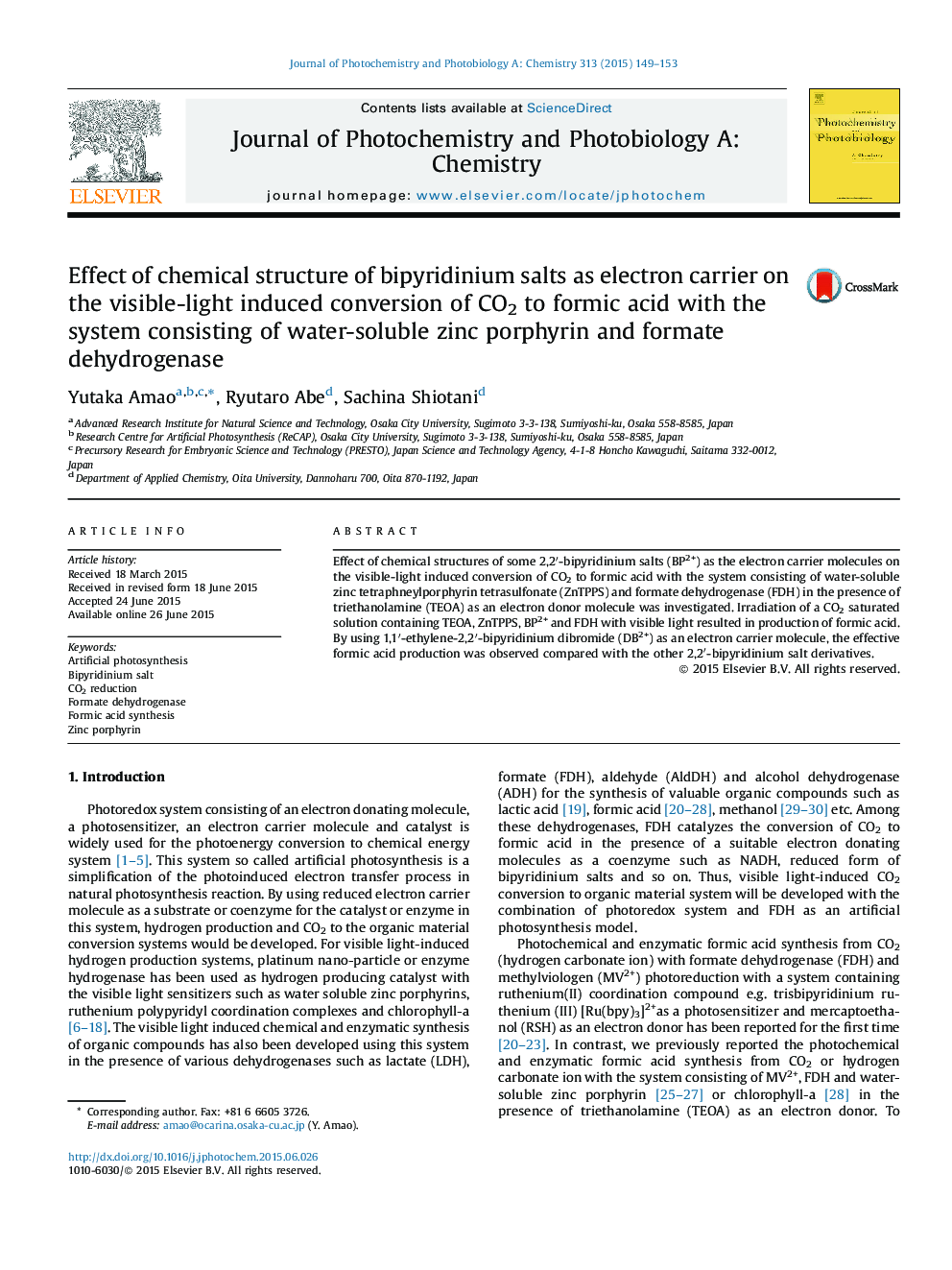| Article ID | Journal | Published Year | Pages | File Type |
|---|---|---|---|---|
| 26477 | Journal of Photochemistry and Photobiology A: Chemistry | 2015 | 5 Pages |
•Effect of chemical structures of 2,2′-bipyridinium salts (BP2+) on the visible-light induced conversion of CO2 to formic acid with the system consisting of Zn porphyrin and formate dehydrogenase (FDH) was investigated.•The photoreduction efficiency of BP2+ depends on the redox potential of BP2+ and effective photoreduction was observed using 1,1′-ethylene-2,2′-bipyridinium dibromide (DB2+) with the lowest redox potential among BP2+s.•The formic acid production yield depends on the redox potential of BP2+ and the dihedral angle of the reduced form of BP2+, and effective formic acid production using DB2+ with the lowest redox potential and smallest dihedral angle also was observed compared with the other BP2+s.
Effect of chemical structures of some 2,2′-bipyridinium salts (BP2+) as the electron carrier molecules on the visible-light induced conversion of CO2 to formic acid with the system consisting of water-soluble zinc tetraphneylporphyrin tetrasulfonate (ZnTPPS) and formate dehydrogenase (FDH) in the presence of triethanolamine (TEOA) as an electron donor molecule was investigated. Irradiation of a CO2 saturated solution containing TEOA, ZnTPPS, BP2+ and FDH with visible light resulted in production of formic acid. By using 1,1′-ethylene-2,2′-bipyridinium dibromide (DB2+) as an electron carrier molecule, the effective formic acid production was observed compared with the other 2,2′-bipyridinium salt derivatives.
